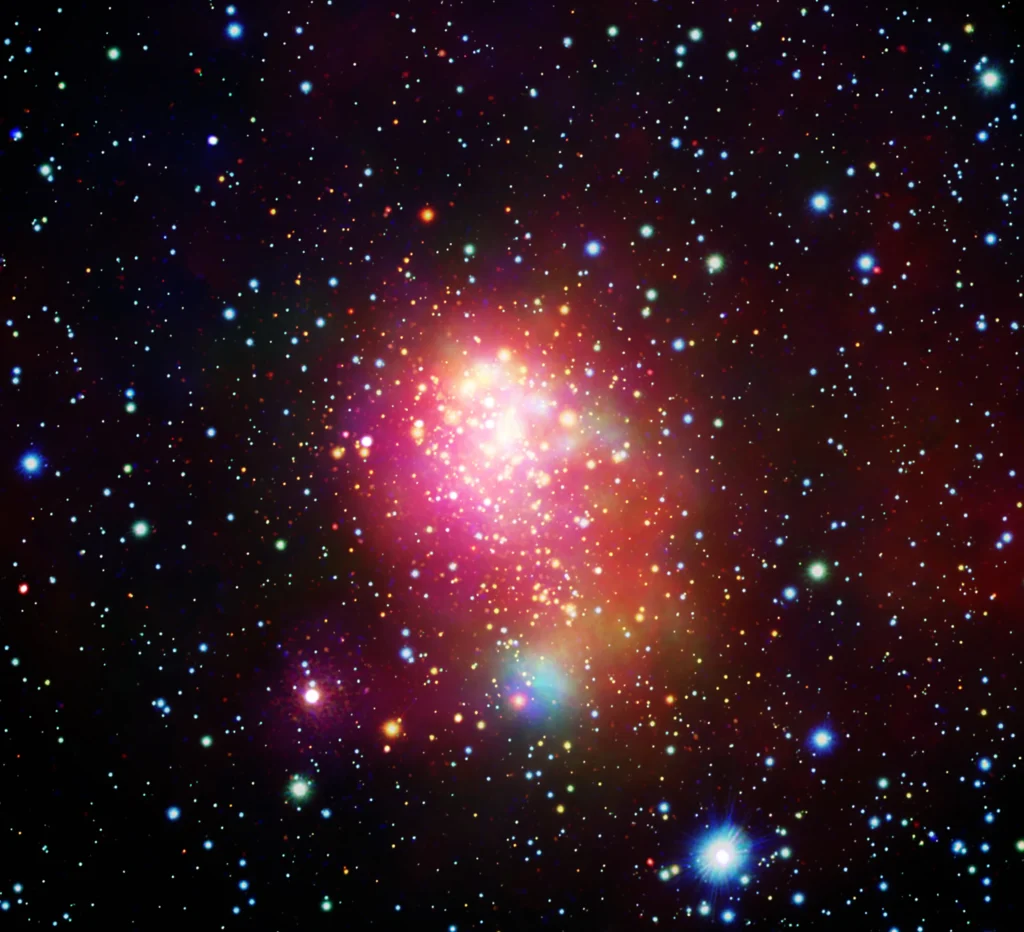NASA has published an image of the Westerlund 1 star supercluster. It was made with the help of the X-ray telescope Chandra.

Nowadays, only a few stars form each year in our galaxy. In the distant past, the situation was very different. According to astronomers’ estimates, about 10 billion years ago, the Milky Way was at the peak of star formation giving birth to dozens, or rather even hundreds of stars per year. Since then, the rate of formation of new luminaries gradually decreased until it reached the current rate.
Astronomers believe that most of the ancient star formation took place in massive clusters (sometimes called super star clusters), with masses at least 10,000 times greater than the solar mass. Now there are only a few of these super clusters left in our galaxy.
The largest and at the same time closest to the Earth of the remaining super clusters is Westerlund 1. It is located at a distance of 13,000 light years. Its mass is from 50,000 to 100,000 solar masses, its age is from 3 million to 5 million years.
All of these qualities make Westerlund an ideal natural laboratory for studying stellar evolution and how it affects the galactic environment. As part of the EWOCS project, NASA used the Chandra observatory to study Westerlund 1. In total, it observed it for 12 days.
Chandra was able to detect over 6,000 new X-ray sources in the cluster. For comparison, before the EWOCS project there were only 1721 known sources. Many of these sources are stars with masses less than that of our Sun.
One of the most important discoveries was that the 1075 stars detected by Chandra are “squeezed” into a region within just four light-years from the center of the cluster. This is comparable to the distance between the Sun and its closest star, Proxima Centauri.
We previously told you about how Chandra would look for life near the stars closest to us.According to NASA


